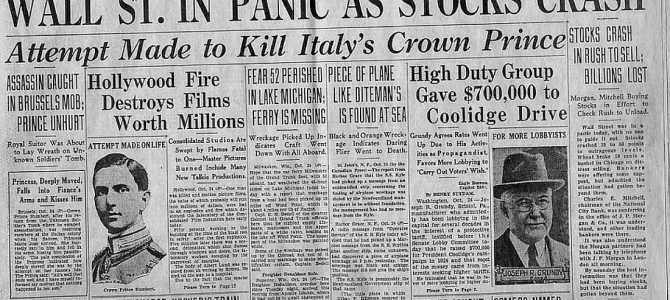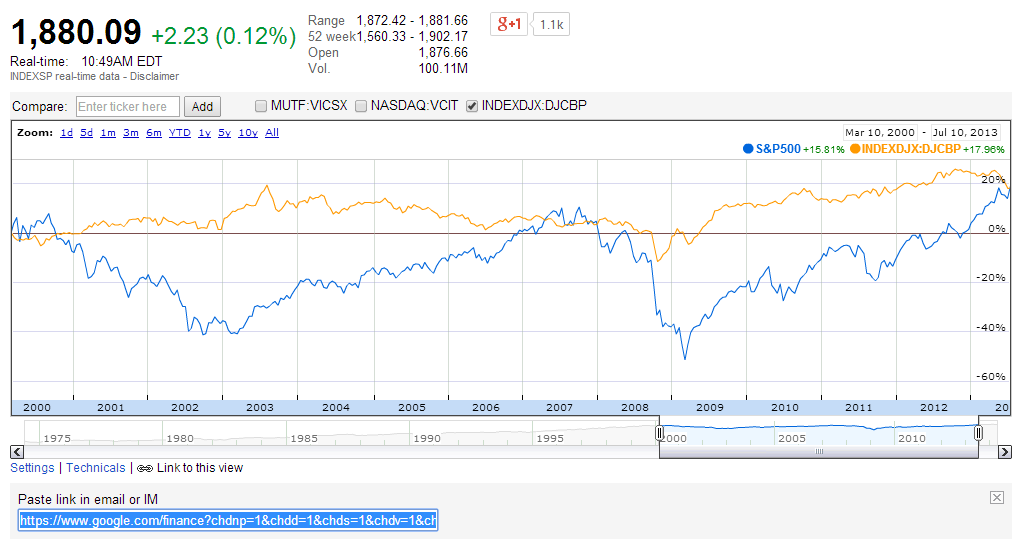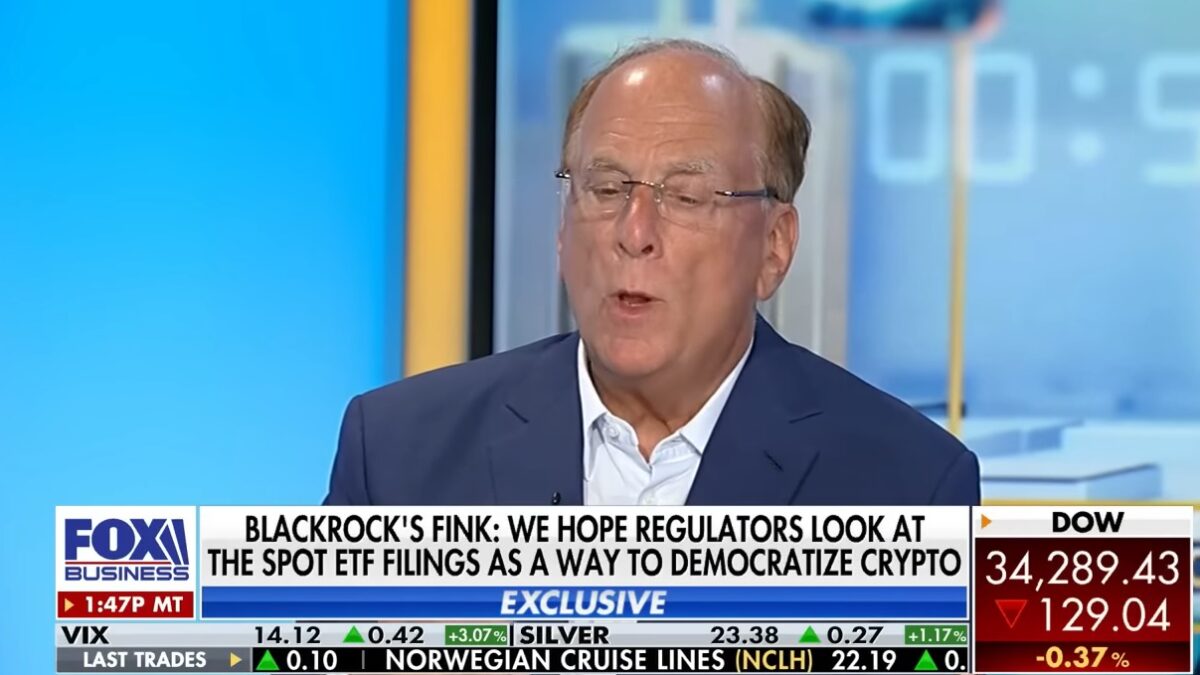
Millennials are keeping their distance from the stock market, and according to writer John Aziz at The Week, that makes them financial neanderthals. Even the few lucky Millennials with ample cash to throw around are avoiding the equity markets, a move that Aziz calls “totally boneheaded”:
Just 27 percent of 18- to 29-year-olds reported owning shares in individual companies or as part of a fund, down from 33 percent in April 2008, according to the latest Gallup poll on the matter. So what's different for millennials? Over at Bloomberg, Jeanna Smialek argues that they have become extremely risk averse due to the two financial crashes we have seen in our lifetimes: "As the oldest millennials approached college graduation in 2002, they witnessed a 78 percent plunge in the Nasdaq index as the bubble in technology shares burst. As they reached their mid-twenties in 2008, the Standard & Poor's 500 Index dropped 38.5 percent, the worst single-year performance since 1937. The gauge dropped 57 percent from October 2007 through March 2009." But I don't think that's a great excuse. Millennials haven't just been exposed to two big financial crashes; they have also been exposed to some pretty big booms, such as the current great bounceback from the 2008 recession. I am a millennial. I was born in 1987, and even in my lifetime — the period during which we millennials were supposed to have been "scarred" — stocks have actually appreciated a lot, and are making all-time highs: Over the last 200 years stocks have vastly outperformed every other type of asset. In the long run, it is much smarter to give your investable money to productive businesses that produce a return than stash it in a bank account, or gamble on a depreciating asset like real estate, or speculate on a shiny but totally unproductive asset like gold. This is basic information available to everyone, not some deep secret available only to the elite.
For all his criticism of the financial investing decisions of Millennials, Aziz is actually the one who comes across as a financial illiterate with little to no understanding of risk or individual risk aversion.
Aziz bases his first piece of advice — that Millennials should immediately dump what precious little cash they have in the market — on the fact that the market has recently appreciated and is currently at or near all-time highs. Now, I’m not a professional financial adviser, but “buy at the top” strikes me as monumentally stupid advice. You generally want to buy low and sell high, not buy high and hope for the best. And don’t get me started on the bubble-inflating notion that it’s wise to throw your money at any security that happens to be appreciating. That particular piece of advice forms the foundation of the “Greater Fool Theory,” which states that security prices are determined not by fundamentals, but by mob psychology — don’t worry, as long as there’s another sucker out there to take those investments off your hands, you’ll be fine.
Aziz’s next rationalization is that Millennials should increase their equity risk exposure because over the past 200-year period, stocks have outperformed other assets. That’s all well and good, but most investors don’t have a 200-year time horizon. For a 20-year-old today, the average investment horizon probably spans 60 years or so. What has the first wave of Millennials (those born in the early 1980s) witnessed over the first 20 percent of that likely investment period? They haven’t just experienced seemingly unending volatility and uncertainty, they’ve also had to face some pretty lame equity returns. And left unsaid by Aziz is that it’s actually quite common for other assets, such as bonds, to outperform equities over shorter periods of time. For example, from the New York Times in 2009:
What may be less widely understood is that over that same 10 years, while the stock market’s overall returns were disappointing, the bond market produced handsome gains. Bond rallies have not generated the hoopla that the stock market customarily receives, but over the last 10 years, investors have had more reason to celebrate if they held bonds, not stocks, in their portfolios.
Calculations performed for Sunday Business by Morningstar, using data from its Ibbotson Associates subsidiary, show that the stock market underperformed important bond categories over the 10 years through September — with an annualized loss of 0.2 percent for the Standard & Poor’s 500-stock index, versus annualized gains of 8.1 percent for long-term government bonds and of 7.8 percent for long-term corporate bonds.
What’s more, the S.& P. 500 underperformed long-term government and long-term corporate bonds over the last 20 years as well. Over longer periods — 30 years, 40 years, and in an 83-year stretch from 1926 to 2009 — the Ibbotson numbers indicate that stocks did outperform bonds, sometimes by more than three percentage points, annualized. But bonds were far less volatile throughout. And the further back in history you go, the less directly comparable is the data.
Rather than assuming Millennials are stupid for not throwing their cash at the stock market, take a moment to think through the financial events they’ve witnessed as young adults: a dot-com bubble that burst in 2000, a war-induced shock in 2001, a near market collapse that began in 2007 and lasted through 2009, and a decade over which bonds outperformed stocks. And when you do the math on stock market returns from the top in 2000 — when Millennials first started graduating from college — through last Friday, you find that the average annual return on the overall market since March of 2000 is a measly 1.5 percent.
Let that sink in for a moment. Over the past 14 years, the overall stock market returned only 1.5 percent each year, on average. One of the main tenets of modern financial theory is that higher assumed risk should result in higher expected returns, since a rational investor would demand greater returns in exchange for the assumption of more risk. If you could only use one word to describe the stock market from 2000 through 2010, it would probably be “volatile.” Maybe even “risky.”
And what did the average equity investor (gross of fees, mind you) get in return for the massive risk he or she assumed since the beginning of the 21st century? Roughly 1.5 percent a year over 14 years. From March of 2000 through mid-2013, an investor in a simple corporate bond index would have outperformed an individual who invested in an index fund that tracked the S&P 500.

And the bond investor would’ve booked those higher returns without ever bearing the astronomical risk associated with 2000-era equity investing. Millennials, just like all other rational investors, either want the highest return for a fixed amount of risk or the lowest risk for a fixed return. Aziz’s protestations notwithstanding, there is simply nothing rational about expecting middling returns in return for the assumption of eye-popping risk.
The underlying fault of Aziz’s critique is that he completely fails to account for the need to calibrate returns with risks. Not all returns are created equal: a spin at the roulette wheel is a lot riskier than a short-term government bond, even if the two methods happen to yield the same return at the end of the day. It is clear from the data that over the long-term, equities tend to outperform bonds and other assets. However, that is a rather meaningless statement if you don’t also take risk into account.
Of course equities should outperform bonds. They are inherently riskier securities, since equity holders are last in line, far behind senior bondholders, when it comes to asset distribution in the event of a bankruptcy. Equity holders have a claim on a portion of risky future cash flows, while bondholders have a claim on all current assets. Those different risk dynamics are why so much research has been done on the equity risk premium: just how much additional return should equity investors demand in return for the higher amounts of risk that they’re bearing?
Risk-adjusted returns are the entire game of modern finance. You simply cannot compare one security’s return to another without also comparing each security’s risk. Literally all of modern portfolio theory is based on this fact. Numerous Nobel prizes have been awarded to those who developed methods of comparing financial apples to apples by quantifying risk.
Risk is more than just simple volatility, though. An individual who is fine with a certain amount of periodic volatility might not be okay with the likelihood of losing half of her principal or more due to a prolonged market shock. Take the following example: imagine a game that requires you to buy a ticket using your entire accumulated wealth — for the ease of calculation we’ll say that’s equal to $1 million. You have a 51 percent chance of winning. If you win, you double your money. If you lose, you lose everything. Simple math says that you should play the game, as your expected return exceeds the cost to play the game ((51% x $2,000,000) + (49% x 0) – $1,000,000 = $20,000, or an immediate 2% return on investment). How many of you would take that bet? Aziz would have you believe that its irrational to NOT take the bet, since the expected return is positive.
That’s not how economics or financial decision-making works, though. You must take risk into account. An individual who took that bet above would be described as risk-neutral. An individual who avoided it would be described as risk-averse. Most people, it turns out, are risk averse. There’s nothing wrong or dumb or irrational about being risk averse. Quite often, they simply do not want to bear the risk of significant loss of principal in return for what they view as a moderate potential return. (Interestingly enough, individuals with a damaged amygdala, the portion of the brain that governs decisions about risk, are more likely to make those risk-neutral bets than are those with a properly functioning amygdala.)
Now put yourself back in the shoes of a Millennial. You’re already incredibly exposed to market and economic risk — after all, it’s the market that provides you a job if you’re lucky. Aziz says Millennials are frittering away their retirement savings, but how can you possibly retire if you can’t even find a good job? Steady employment is a retirement prerequisite, since you can’t really retire from nothing. Now take into account the bills you have to pay. There are student loans to pay off, health insurance premiums (or fines) to pay, rent checks to send, and so on. Finally, take into account the ups and downs of the markets over the last 15 years: over the course of your life as an adult capable of investing, you have seen the market wipe out the majority of its value not once, but twice.
When viewed through that lens, it becomes increasingly clear that Millennials are completely rational actors when it comes to stock market non-investing, and there’s nothing irrational about taking very real risks into account before handing your cash over to that fancy brokerage web site promising a whopping 1.5 percent annual return over the next 14 years.









